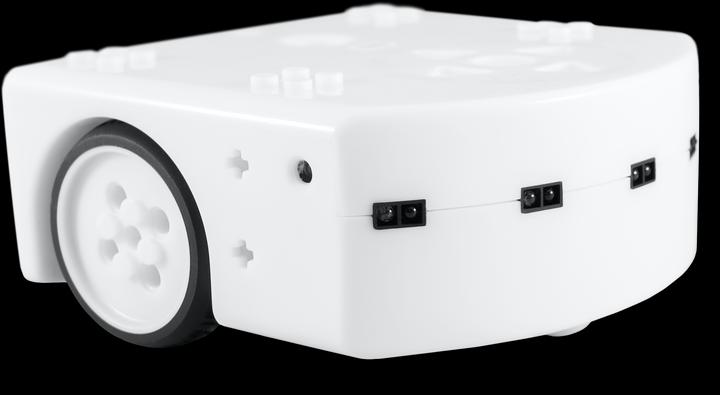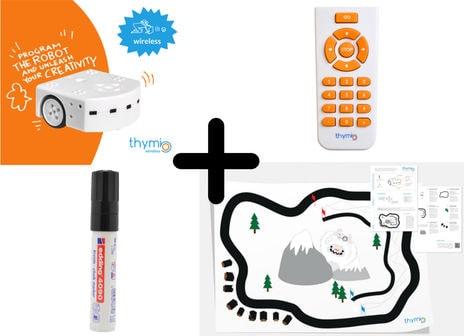
The robot that grows with you!
The Thymio is cute. It measures around 10x10 centimetres. Despite its size, it can do a lot of things. Product manager Oli Stulz certainly has stars in his eyes when he talks about the Lilliputian.
Stars in the eyes of Oli, an old hand in the RC field? Yet the Thymio was originally developed to familiarise children and young people with robotics. The first version of the Thymio and the software, among other things, were created at the EPFL in Lausanne and the ETH in Zurich. All the hardware and software are under a free licence. The device can therefore be legally built and sold by other manufacturers. Or you can plug in the 3D printer and get started yourself. All plans and programmes are freely available, because the organisation behind Thymio has no commercial aims. All profits go back into the project.
Now, we've almost already gone into too much detail, because as already said earlier, the target audience is children and young people. The world of robotics is shown to them in a playful way. The Thymio has various buttons and sensors, as well as lights and motors. It's easy to control using software. Like a flow chart, you select your actions and control the motors. Oli shows you how it works in the video (in German). It's an ideal way to let children apply the principle that "when I do this, that happens". (Because often, little ones only experience this principle indirectly "If you finish your plate, you'll get chocolate!")
Thanks to close collaboration with scientists and educationalists, Thymio is also ideal for school projects. An exercise might, for example, involve getting the Thymio to clear an obstacle course. The methods for achieving the goal are varied, as are the elements to be used. You need to be creative. All the courses, teaching sheets and teaching aids can be downloaded here.
For anyone who already has experience with visual programming can get started with text programming. Here, each of the Thymio's sensors can be programmed and complex actions can be ordered. If you want to get away from the Drag&Drop user surface, there are a number of complex projects available. We'll show you how in the next two videos. The graphical surface that generates text code is particularly elegant. So you can see what's going on under the bonnet at all times, and learn very quickly. Or as Oli Stulz would say: "This stuff is just brilliant!"
If you enjoyed the video, Oli will show you everything you can do with the Thymio in the next two videos.
You might also be interested in these articles:
I'm the master tamer at the flea circus that is the editorial team, a nine-to-five writer and 24/7 dad. Technology, computers and hi-fi make me tick. On top of that, I’m a rain-or-shine cyclist and generally in a good mood.
Interesting facts about products, behind-the-scenes looks at manufacturers and deep-dives on interesting people.
Show all